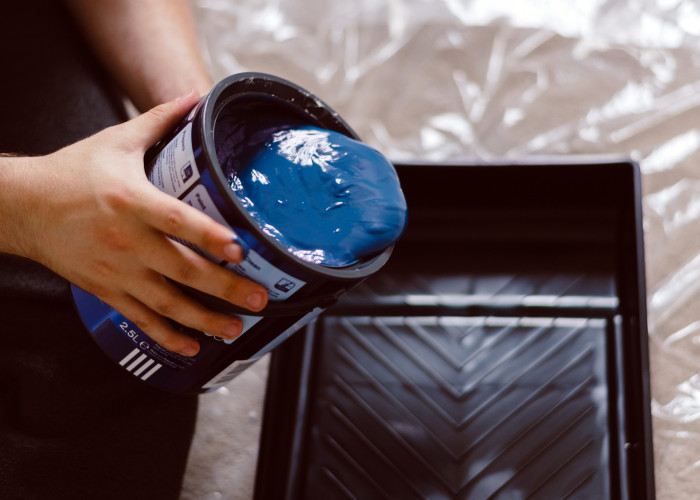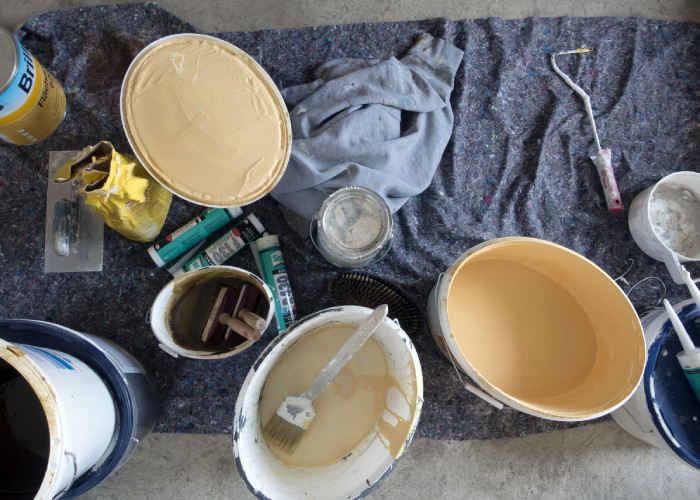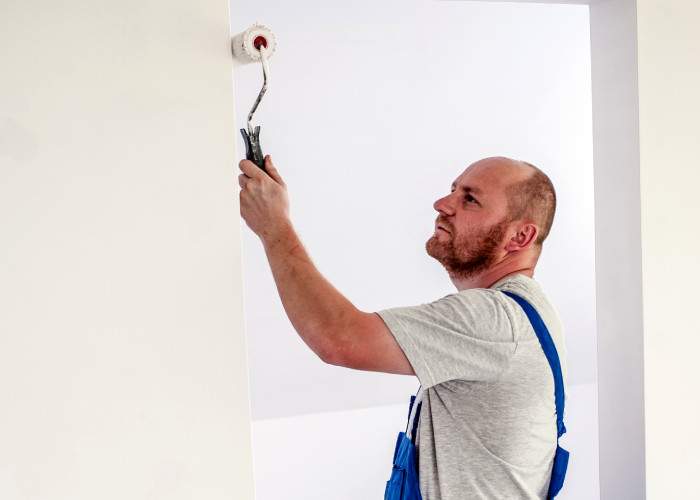With times as they are, like most of us, you’re probably thinking of trying to cut costs whenever and wherever you can.

Whether you are a new homeowner doing up a house or your house needs a bit of TLC, painting and decorating a room is one of those jobs where you can save some cash. However, to get that professional finish, how much do you know about painting and decorating and what do you need to paint a room?
Read on to find out what you need to buy and do if you are doing it yourself and the advantages and disadvantages of hiring a professional so you can decide what is best for you.
Which tools and materials do I need to buy?
First of all, you’ll need to buy the tools for the job. The amount of equipment and which type will depend on the state of the room. For instance, if you’re painting over new plaster then it should be a straightforward job or are you having to strip the wallpaper, replaster and sand all the woodwork down?
It’s also recommended that you buy quality tools and materials – don’t go for the cheap option (buy cheap buy twice as the saying goes). This is the case with paint brushes; with cheap brushes, you will find they won’t last long and the hairs may shed.

Here is a list of tools / materials you may need:
- Wallpaper scorer – to help remove wallpaper
- Electric sander potentially
- Dust sheets – to cover furniture
- Step ladder
- Masking tape – to cover parts you don’t want to be painted and to get clean lines
- Sugar soap – a mild detergent that is ideal for cleaning paintwork to improve adhesion before you add any new paint
- Sandpaper – for smoothing and prepping surfaces
- Decorators caulk – to fill the gaps between skirting boards / door frames and the wall
- Mist coat paint – a primer if painting straight onto new plaster (or you can use white emulsion paint and thin it out with water)
- Paint – emulsion for walls; gloss, satin or eggshell for woodwork
- Paint roller
- Paint roller extension pole
- Paint brushes – a variety of flat and angled brushes to get every nook and cranny
- Paint roller tray
- Paint kettle – a container to put your paint in rather than carrying a heavy tin full of paint
- Rags
- Putty knife – for smoothing surfaces and ensuring clean lines
Buying the paint
Before buying the paint you will need to determine how much paint you need which can be tricky as it all depends on the texture of the walls, the paint colour you are going for and what is already on the walls.
A highly textured surface will need more paint than a smooth one and you’ll need additional paint when going from dark to light but you can generally assume that the room will need two coats of paint.

Preparing the room
Once you have all the tools, the most important thing for your room to have a professional finish is to make sure you prepare the room and have a strategy, as it’s not quite as simple as just slapping a bit of paint on a wall. It can be quite time-consuming if you aren’t just painting over plaster.
Here are the steps you’ll need to take (depending on the state of the room) to prepare a room for painting:
- Remove any furniture from the room or cover it all with dust sheets.
- If there is wallpaper already on the walls, use a scorer or possibly a steamer to remove it. This can be an arduous task especially if it is very old wallpaper or artex.
- Re-plaster walls – this will depend on the state of the walls behind the wallpaper.
- Fill any gaps in the walls or between skirting boards and doors with a decorator’s caulk.
- Smooth and prep the surfaces with sandpaper or even better, with an electric sander to speed up the process.
- Wash the ceiling and walls down with sugar soap to ensure they are clean so that the paint will give a nice smooth finish.
- Use a primer on the surface of the walls before you paint to help reduce the number of applications.
- Don’t forget to use masking tape to cover things that you don’t want to be painted or to get dripped on, such as door and window frames, light fittings and switches.

Process of painting a room
It’s important to have a strategy when painting a room especially if you are using different colours on the walls and ceiling.
Here is a step-by-step process for painting a room:
- Cut in along the ceiling with a brush.
- Use a roller attached to an extension pole to paint the rest of the ceiling.
- Paint the skirting boards and the rest of the woodwork. Do two coats and use a primer if going on to bare wood.
- Paint the walls (at least two coats), and although it’s easy to rush to get it finished; make sure to wait for the paint to dry in between coats.
- Clean up – make sure to wash the paint brushes properly if you want to use them again.
- Sit back, relax and admire your hard work and (hopefully) a well-painted room with a good finish!
Hiring a professional painter
Painting the room yourself versus hiring a professional will save you money as the only outgoings you have to pay are the tools and materials. The cost to hire a professional painter to paint a room is typically in the range of £400 for an average sized room.
However, doing it yourself is time-consuming. It can also be stressful if you haven’t done it before or aren’t very experienced and you could also end up spending more on paint and products than you need to. And at the end of it all you may be disappointed as the finish may not be as you had hoped.
When hiring a professional, you know they will have extensive knowledge and experience on products and tools needed for each room and surface, resulting in a better quality of work. They will also be quicker as they know which steps to follow to give it a professional finish.




